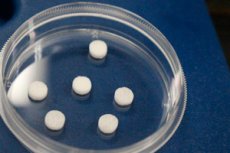Implant sensors detect early signs of organ rejection in mice
Sist anmeldt: 14.06.2024

Alt iLive-innhold blir gjennomgått med medisin eller faktisk kontrollert for å sikre så mye faktuell nøyaktighet som mulig.
Vi har strenge retningslinjer for innkjøp og kun kobling til anerkjente medieområder, akademiske forskningsinstitusjoner og, når det er mulig, medisinsk peer-evaluerte studier. Merk at tallene i parenteser ([1], [2], etc.) er klikkbare koblinger til disse studiene.
Hvis du føler at noe av innholdet vårt er unøyaktig, utdatert eller ellers tvilsomt, velg det og trykk Ctrl + Enter.

A new study published in Science Advances reports that a microporous scaffold functions as a minimally invasive surveillance method to detect rejection before graft failure in a mouse model.
These sensors are the first step toward creating a tool that can provide doctors with important early information about the possibility of organ rejection in transplant patients.
Organ transplantation is accompanied by aggressive immunosuppression to prevent graft rejection. However, excessive immunosuppression can increase the risk of developing neoplasms and opportunistic infections, and insufficient immunosuppression can lead to graft damage.
Usually, biopsies of the transplanted organ are performed to assess the effectiveness of immunosuppression. However, these invasive biopsies have significant variability and are a lagging indicator of rejection. To detect rejection before graft failure, a team of researchers from the University of Michigan used a microporous scaffold that functions as a minimally invasive surveillance method.
After heart or skin transplantation in mice, innate and adaptive immune cells accumulate in niche implants, and gene expression analyzes identify biomarkers of acute cellular allograft rejection (ACAR) before the onset of clinical signs of graft damage.
Initial studies were conducted with adoptive transfer of T cells to mismatched allografts, allowing a focus on T cell-mediated rejection, followed by validation studies in wild-type animals. The niche scaffold allows for frequent cell sampling, and a panel of genetic biomarkers distinguishes mice that reject allogeneic grafts from mice that receive healthy grafts.
"Research on monitoring immune responses has become exciting with the rise of immunotherapies. This detection of an unwanted immune response has significant medical promise, since often you don't know about an unwanted response until the organ will begin to lose function," said Lonnie Shea, a professor of biomedical engineering at the University of Michigan and co-author of the study.
The new process begins with the implantation of a porous scaffold under the skin, where tissue develops in the pores. The developing tissue becomes vascularized. The net effect is that blood vessels pass through this space, and immune cells circulate through them.
The material triggers a foreign body response, resulting in the recruitment of immune cells. Importantly, these cells exhibit a tissue-specific phenotype rather than a circulation-specific one, allowing researchers to monitor tissue responses over time.
"When the immune system is activated in the context of graft rejection, you may see activated immune cells on the implant," Shi said.
The ability to assess immune responses in tissues could be a powerful tool for researchers studying the immune system. Sequential analysis of cell transcriptomes can detect possible organ rejection with a minimally invasive biopsy instead of a transplanted organ biopsy, which has a higher risk.
“Solid organ transplant survival is considered one of the most important advances in modern medicine, but we often overlook the aggressive therapies needed after transplantation to maintain healthy grafts,” said Russell Urie, a postdoctoral fellow in the Department of Biomedical Engineering at the University of Michigan.
"These implantable sensors can detect very early rejection processes, which is the first step toward a tool for personalized post-transplant care and minimizing the invasive procedures and devastating side effects that transplant recipients currently must endure," Uri added.
"This will be especially important for organ transplant recipients in childhood and adolescence, as they must undergo treatment and biopsies over several decades and even a repeat transplant."
